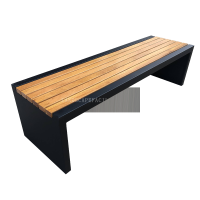Welcome to the website for landscape facilities products and knowledge.
How do landscape tables perform in areas with high wildlife activity, such as parks or reserves?
Landscape tables are a popular choice for outdoor spaces, but their performance in areas with high wildlife activity, such as parks or reserves, requires careful consideration. These tables must balance durability, functionality, and environmental harmony to succeed in such settings.
In wildlife-rich areas, landscape tables face unique challenges. Animals may interact with the furniture, whether by scratching, climbing, or even chewing. To withstand this, tables should be constructed from robust materials like powder-coated steel, recycled plastic, or sustainably sourced hardwoods. These materials resist damage while minimizing ecological impact.
Design also plays a critical role. Smooth surfaces and rounded edges prevent injury to wildlife, while elevated or anchored bases deter burrowing animals. Some parks opt for modular designs that allow easy relocation if wildlife patterns change.
Beyond durability, landscape tables in these areas often serve dual purposes. They provide seating for visitors while doubling as subtle barriers to protect sensitive habitats. Strategic placement ensures human enjoyment without disrupting animal corridors or nesting sites.
Maintenance is another key factor. Wildlife-friendly tables avoid toxic finishes and sharp components that could harm animals. Regular inspections help identify wear before it becomes hazardous.
When properly designed and installed, landscape tables enhance both visitor experience and wildlife coexistence. They prove that functional outdoor furniture can thrive even in the most active natural environments.
Related search:

Recommendation
Modern Stainless Steel Begonia Wood Park Chair Outdoor Courtyard Leisure Sun Protection Bench Long Seat